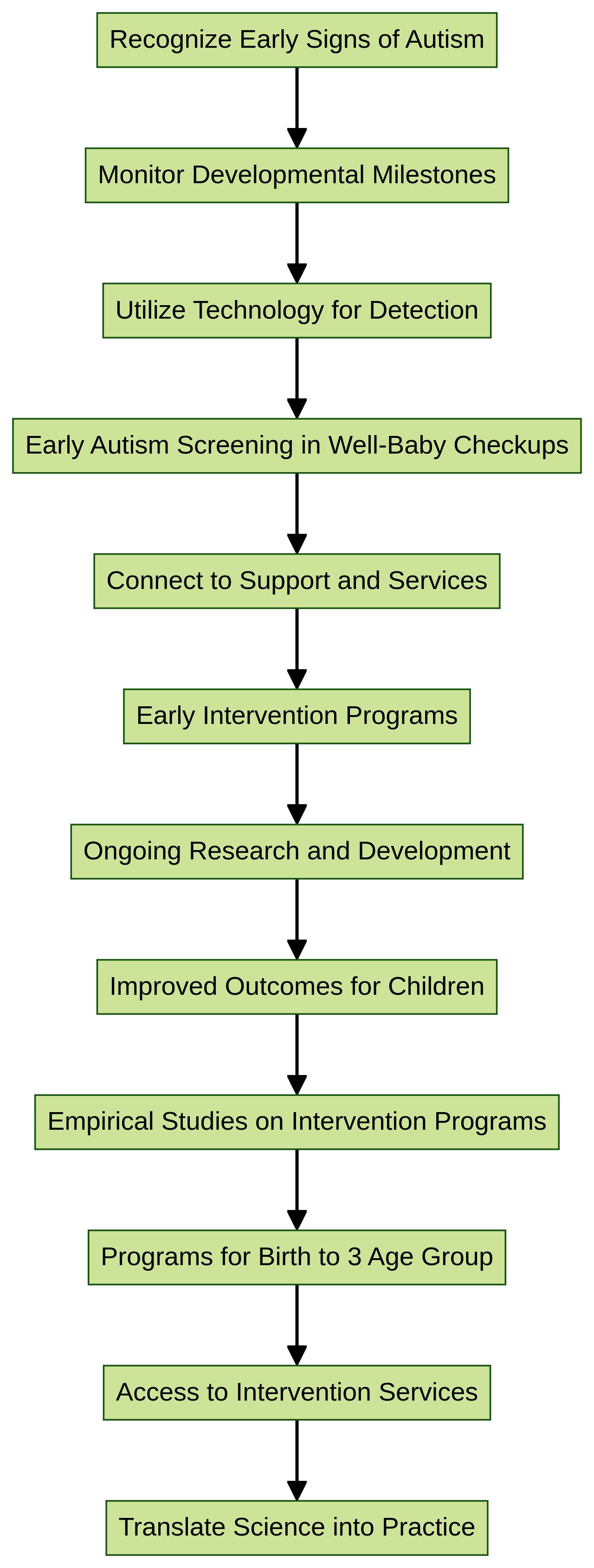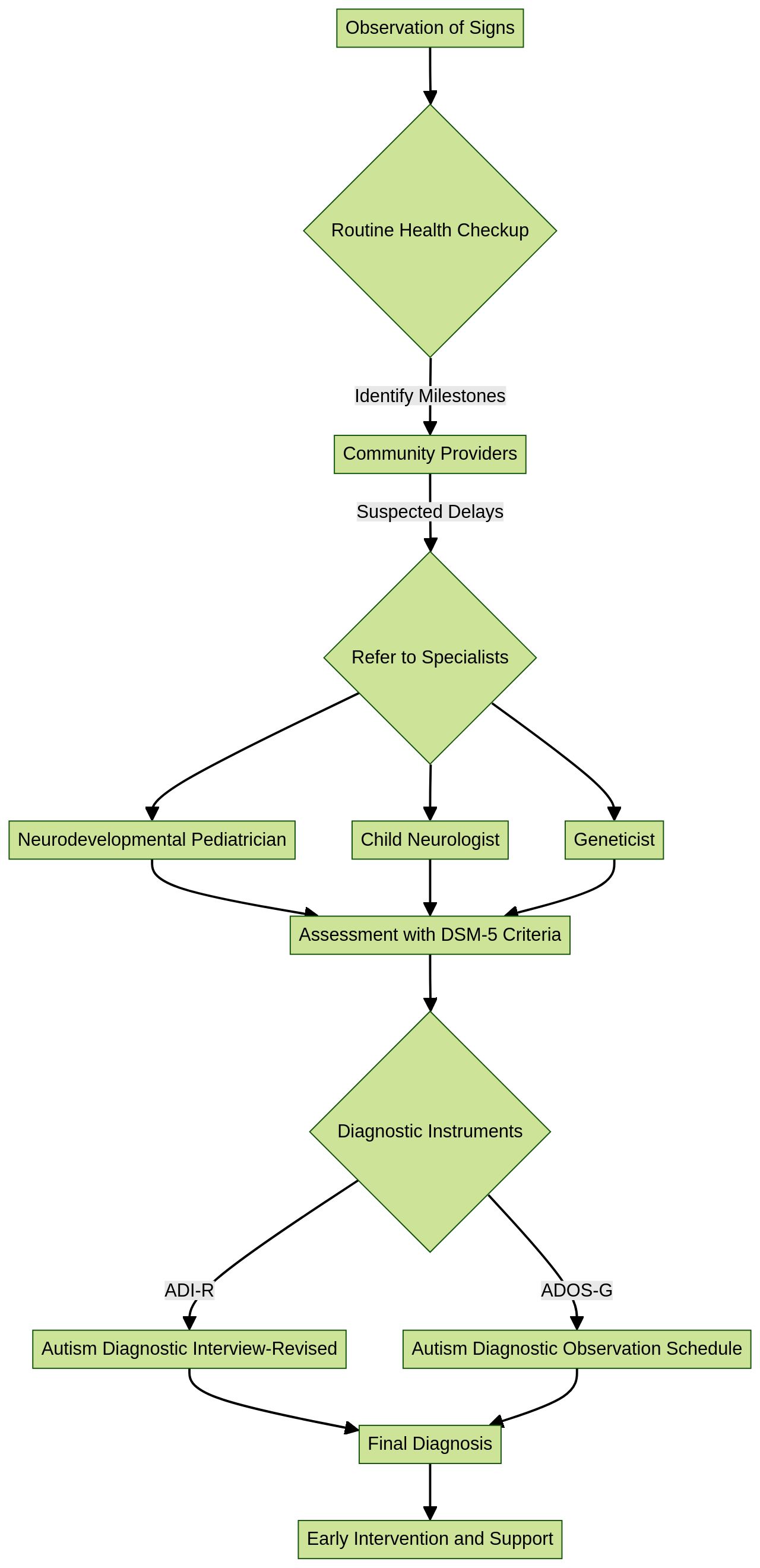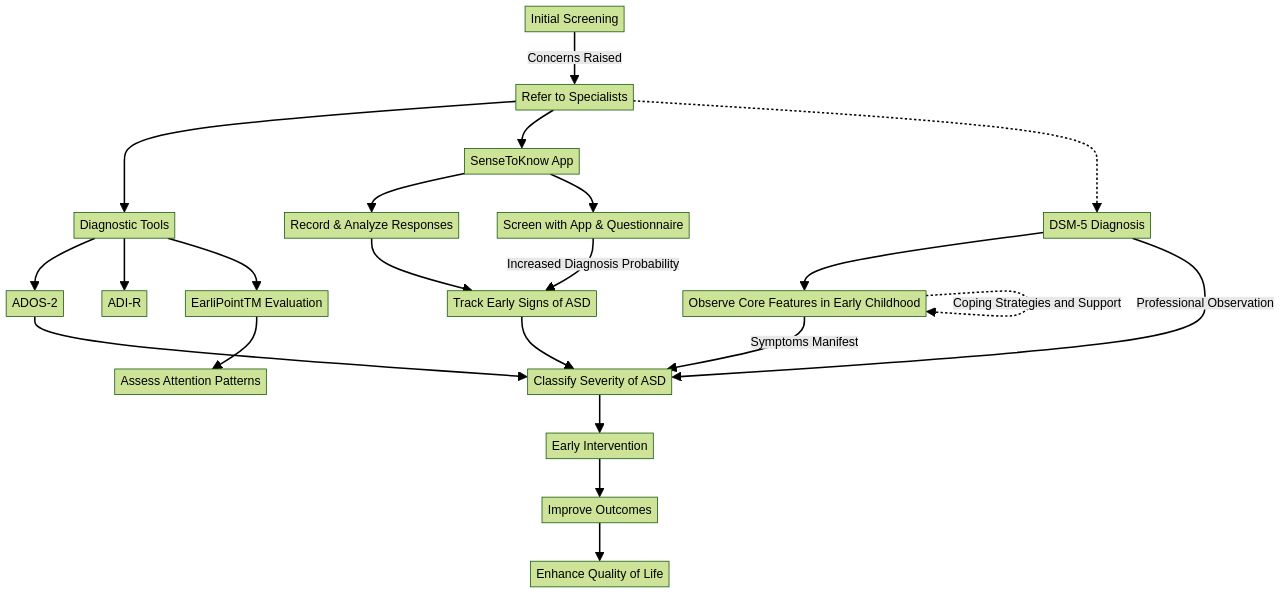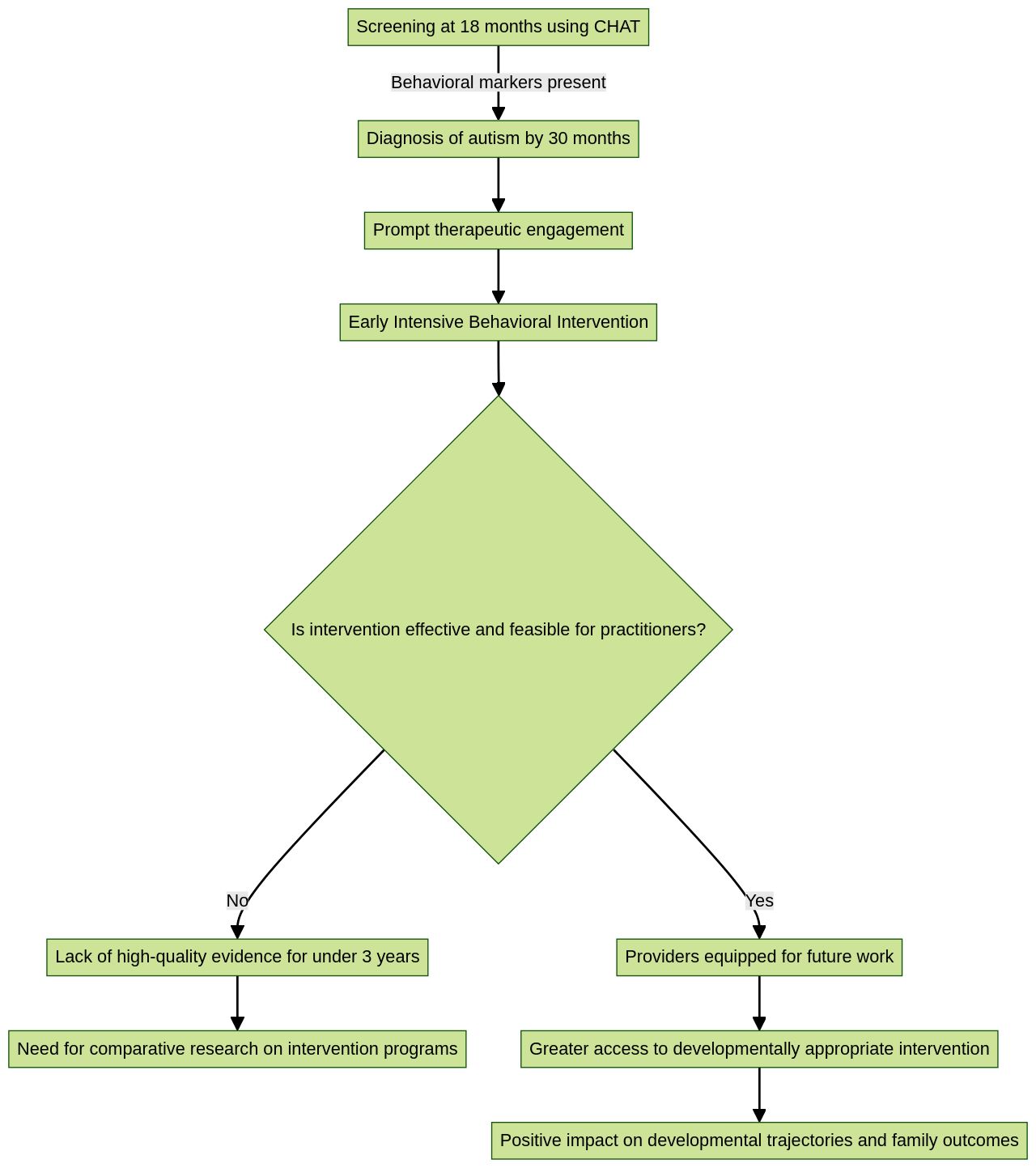Introduction
Autism Spectrum Disorder (ASD) is a complex neurodevelopmental disorder that affects individuals in unique ways, forming a broad spectrum of abilities and experiences. With a rising prevalence of 1 in 36 children, early diagnosis and intervention are crucial.
This article explores the importance of understanding and recognizing early signs of autism, seeking a professional evaluation, utilizing diagnostic tools and tests, and the profound impact of early intervention. By providing guidance and resources, this article aims to empower parents and advocates in navigating the challenges of autism and ensuring the well-being of their children.
Understanding Autism Spectrum Disorder
Autism Spectrum Disorder (ASD) is a multifaceted neurodevelopmental disorder characterized by challenges in social communication and interaction, along with a tendency for repetitive behaviors and interests. It's essential to understand that ASD manifests uniquely across individuals, forming a broad spectrum of abilities and experiences.
Brain imaging studies have revealed differences in brain structure and shape among those with ASD compared to neurotypical development, although the specific causes remain uncertain. Genetics are believed to play a significant role, with patterns of Autism and related disabilities observed within families.
While no singular gene has been pinpointed, research continues in the search for genetic markers linked to ASD. The latest statistics from the CDC highlight a significant increase in Autism prevalence, now at 1 in 36 children, a stark rise from 1 in 125 in 2004.
Early diagnosis is critical, as children diagnosed by age 4 are far more likely to access services that can greatly enhance their development. However, disparities exist; more White and Black children are identified with Autism compared to Hispanic children, who may face barriers such as stigma, healthcare access, and language differences, leading to later diagnoses.
The recent study published in Perspectives on Psychological Science by Professors Kenkichi Takase and Eiichi Nojiri builds upon Donald Hebb's work to deepen our understanding of the mind's role in ASD. They aim to elucidate the complex brain connections and mental functionalities underlying ASD, fostering a greater comprehension of the condition. People with ASD may exhibit diverse communication skills, from verbal prowess to nonverbal struggles. Socially, they might show a lack of interest in initiating interactions, difficulty maintaining eye contact, and challenges in understanding nonverbal cues or different perspectives. Despite these difficulties, not all individuals with ASD shy away from social engagement, with some enjoying interactions. It's crucial to debunk myths surrounding ASD; it's not caused by vaccines, parenting styles, or nutrition, and it's not a mental health disorder but a neurological one, with each person displaying a unique constellation of strengths and challenges.
Recognizing Early Signs of Autism
Recognizing the early signs of autism is a critical step in providing the necessary support and intervention at the earliest possible stage. It's important to understand that while developmental delays can be indicative of autism, they can also stem from other health issues, such as hearing or vision problems, or certain genetic conditions.
For example, a child who exhibits delayed speech and language development, challenges with social interactions, or repetitive behaviors may be showing signs of autism. However, it's also possible that these delays are due to other underlying health issues.
It's essential to monitor the developmental milestones of a child's growth, which include social and emotional skills, language and communication, cognitive abilities, and physical development. These milestones act as markers to gauge whether a child is progressing typically for their age.
Recent advancements in technology, including artificial intelligence, have opened new avenues for early autism detection. Research involving eye-tracking technology has demonstrated potential as a tool for identifying autism in children as young as 16 to 30 months.
This technology measures social visual engagement and can predict diagnostic outcomes, which could lead to earlier diagnosis and treatment. With early intervention being crucial, studies indicate that the earlier the treatment starts, the better the long-term outcomes for children with autism, given the increased neuroplasticity of younger brains. The American Academy of Pediatrics recommends autism screening at 18 and 24 months, while the average age of diagnosis currently stands at under 4.5 years. While there are numerous intervention programs available for preschool-aged children with autism, there is a lack of empirical studies comparing these programs, and not all are widely known or accessible. This underscores the importance of ongoing research and the development of comprehensive intervention strategies, especially for the critical birth to 3 age group, to ensure that children with autism receive the most effective support tailored to their unique needs.

Seeking a Professional Evaluation
When you observe signs in your child that may point towards autism, it's crucial to pursue a formal assessment by professionals adept in autism diagnosis. This includes neurodevelopmental pediatricians, child neurologists, and geneticists, among others, who use tools like the ADI-R and ADOS-G for evaluating social interactions, communication, and behavior. These diagnostic instruments are designed for individuals with a mental age of 18 months and older, covering various aspects from social engagement to language skills and repetitive behaviors.
The diagnosis of autism, a spectrum disorder affecting social interaction and communication, often involves combining parental observations with a professional's assessment, guided by criteria from the DSM-5. Despite the variability in early autism presentations and the potential for diagnostic uncertainty, early identification is paramount. Research shows that early screening during routine health checkups can lead to earlier support and intervention, improving outcomes across language, cognitive, and social domains.
Recent studies highlight a promising shift: trained community-based providers can accurately diagnose autism in most cases, harmonizing with specialists' evaluations 82% of the time. This could significantly reduce the long waits and travel burdens that families face, as currently, the median age for an autism diagnosis is over 4 years, despite the possibility of reliable identification by age 2. Embracing such training models for primary care clinicians could alleviate the public health issue of delayed diagnosis and, consequently, delayed access to beneficial interventions.

Diagnostic Tools and Tests
Autism Spectrum Disorder (ASD) is a developmental condition marked by social and communication difficulties, as well as repetitive behaviors. Diagnosis is crucial as it can lead to early intervention, which can significantly improve outcomes.
A variety of diagnostic tools are employed by a team of specialists, including the Autism Diagnostic Observation Schedule (ADOS-2) and the Autism Diagnostic Interview-Revised (ADI-R). The ADOS-2, which spans five modules tailored to the individual's language level, assesses social interaction, communication, and behavior.
It provides scores for social affect and restricted, repetitive behaviors, helping to classify the severity of ASD. The ADI-R, suitable for individuals with a mental age of 18 months and older, evaluates behavior in social interaction, communication, and restricted interests.
Additionally, recent research has introduced the EarliPointTM Evaluation, which uses eye-tracking technology to assess children's attention patterns, aiding in the early detection of ASD. This tool has been validated for use in children aged 16 to 30 months, showing high accuracy in predicting expert assessments. Early screening efforts are now becoming part of routine health check-ups, with the potential to identify signs of autism as early as 12 months. These advancements reflect the ongoing work of researchers and clinicians to improve early diagnosis and connect families to support services sooner, enhancing the quality of life for children with ASD.

The Importance of Early Intervention
Autism, a complex neurodevelopmental condition, presents a vital opportunity for impact in its earliest stages. Recognizing this, researchers and clinicians emphasize the profound importance of early intervention for children with autism.
A striking example comes from a study where toddlers at high genetic risk were screened at 18 months old using the CHAT instrument. Those who showed key behavioral markers, such as challenges with pretend play and joint-attention, were later diagnosed with autism by 30 months.
This early detection underscores the potential benefits of prompt therapeutic engagement. In another vein, breakthroughs at UC San Diego School of Medicine reveal metabolic changes between birth and the development of autism, suggesting new avenues for early detection.
Early intensive behavioral intervention, the benchmark for autism treatment, often lacks high-quality evidence and requires clearer communication about potential outcomes and risks, as highlighted by Micheal Sandbank, PhD. Despite a consensus on essential treatment aspects like intensity and family involvement, there's a scarcity of comparative research on various intervention programs, particularly for those under three years old. The urgency is further amplified by the CDC's report of the increasing prevalence of autism and the median diagnosis age being over four years, despite the possibility of identification by age two. This gap in early diagnosis and intervention can significantly affect children's developmental trajectories and family outcomes. With the right strategies and support, early intervention can lay the groundwork for more positive long-term results for individuals with autism and their families.

Conclusion
In conclusion, early diagnosis and intervention are crucial for children with Autism Spectrum Disorder (ASD). Understanding the unique manifestations of ASD and recognizing early signs is key for parents and advocates.
The prevalence of autism has risen to 1 in 36 children, highlighting the importance of timely support. Advancements in technology, such as artificial intelligence and eye-tracking, offer promising tools for early detection.
Early intervention at a young age leads to better long-term outcomes due to increased neuroplasticity. Ongoing research and comprehensive intervention strategies are needed to tailor support to the unique needs of children with autism.
Seeking a professional evaluation from specialists proficient in autism diagnosis is essential. Diagnostic tools like ADI-R and ADOS-2 assess social interaction, communication, and behavior.
Early screening during routine health checkups can lead to earlier support and intervention, improving outcomes across various domains. Early intervention plays a profound role in improving outcomes for children with autism. However, there is a lack of comparative research on intervention programs for those under three years old. Addressing this gap is urgent given the increasing prevalence of autism and the delay in diagnosis age. By understanding early signs, seeking professional evaluations, utilizing diagnostic tools, and emphasizing early intervention, parents and advocates can empower themselves to navigate the challenges of ASD effectively. With the right strategies and support, early intervention lays the groundwork for more positive long-term results for individuals with autism and their families.




